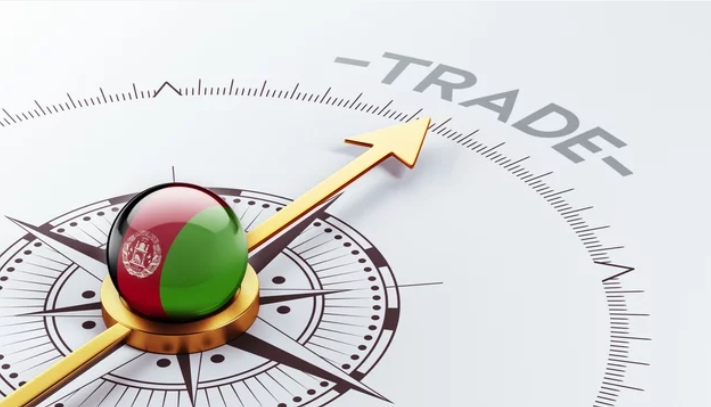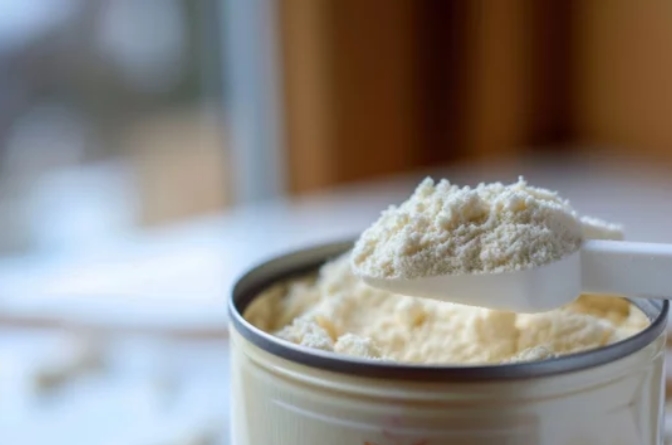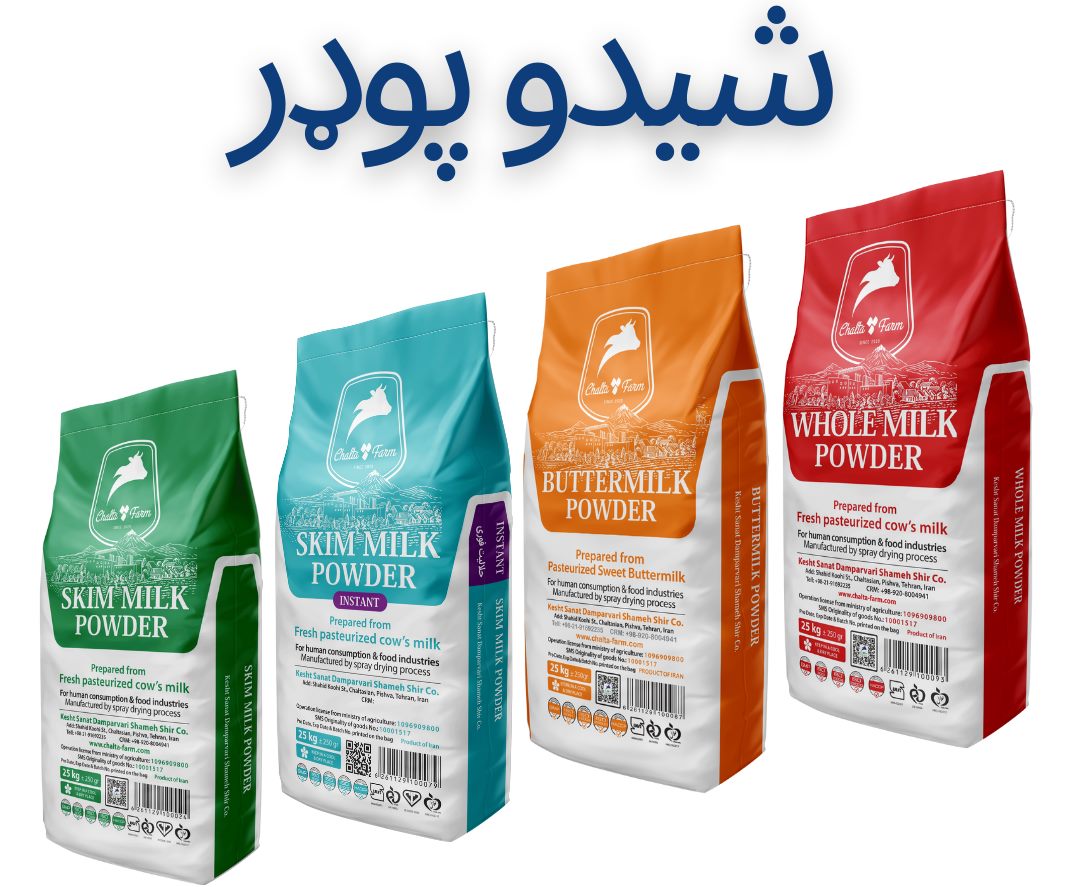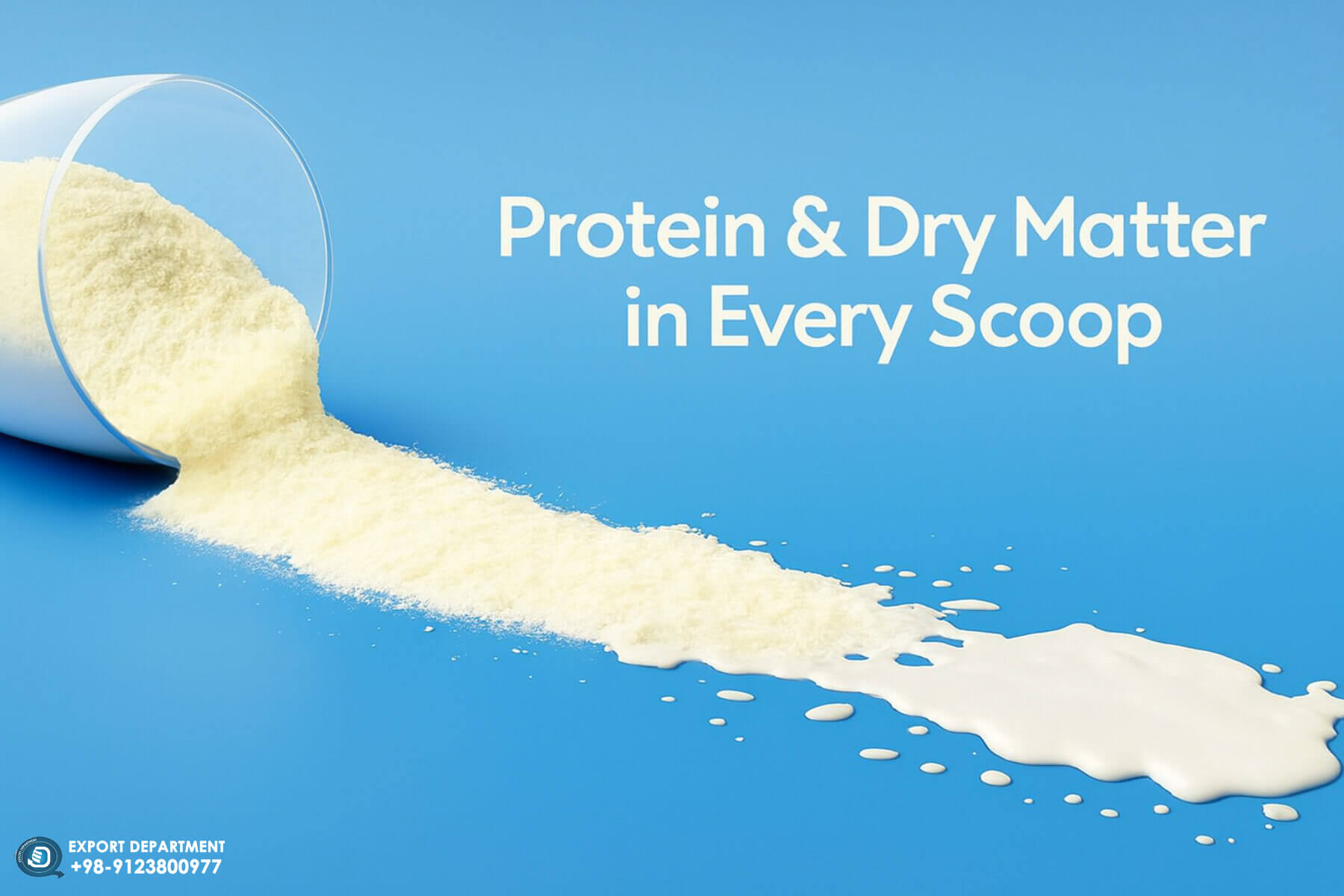Exporting Skim Milk Powder from Iran to Afghanistan
In recent years, the export of skim powdered milk from Iran to Afghanistan, particularly to cities like Kabul and Herat, has been on the rise.
| Table of Contents |
| 1. Export to Afghanistan |
| 2. Advantages of exporting to Afghanistan |
| 3. The process of transforming Iran from an importer to an exporter of dairy products |
| 4. Survey of Iran's export goods to Afghanistan in 1399 |
| 5. export skim milk powder from Iran to Afghanistan |
| 6. brands focusing on exporting Irani non-fat powdered milk to Afghanistan |
| 7. Economic Impact of Iranian Milk Powder Exports on Afghan Market |
| 8. Afghanistan's Trade Exceeds $10 Billion in 2014 |
| 9. Quality and Standards of Iranian Dairy Products |
| 10. Conclusion |
Export to Afghanistan
Afghanistan is one of Iran's neighboring countries and an importer of many edible, agricultural and industrial products from Iran. In recent years, this country has been involved in war and unrest every few years, and naturally, many international brands and brands have become indifferent to its market of nearly forty million people. However, our exports to Afghanistan have always remained unchanged, from years ago to today. This country does not have access to open waters and imports most of its goods from its neighbors.
Afghanistan has a population of about 38.5 million people (slightly less than half the population of Iran) and its official languages are Farsi, Dari and Pashto. Because of this closeness of language and script, and of course culture, Iran's trade relations with Afghanistan have never been very weak. In 2021, the gross domestic product in this country was about twenty and a half million dollars. The coming to power of the Taliban affected the economy as much as everything else in this country, causing many countries to hold back on exports to Afghanistan. Afghanistan's economy and its imports were isolated by this crisis. However, it is still possible for Iranian businessmen as a neighboring country to export to Afghanistan at low cost.

The Afghan society is not consumerist compared to many other societies, but the lack of diversification of the economy and the closure of factories and productions have made it rely on imports to meet its needs.
Afghan people trust and are familiar with Iranian brands, so they are more likely to buy from these brands. Pakistan, India and Iran are the main players in exporting to Afghanistan (although China and Kazakhstan are also on the list of exporters to this country). Foodstuffs, machinery and fuel are the main imports of Afghanistan, and in all three of these areas, Iran has something to say - at least in the region. The new government of Afghanistan is more willing to import from regional countries than Europe and America.
Advantages of exporting to Afghanistan
Exporting to Afghanistan may not be as profitable as exporting to other countries, but it has an easier route due to its neighborhood. In 2022, the growth of exports from Iran to this country increased by 8% (compared to previous years) and in the spring of that year we were able to export 365 million dollars of goods to Afghanistan. This decent growth and promising statistics were before the changes in the political structure. In the summer of 2022, the Taliban dominated Afghanistan for the second time and changed the economy and society of this country.
About 17 to 20 percent of Afghanistan's imports are come from Iran, this figure may have been slightly shaken after the arrival of the Taliban, but it still provides many opportunities for Iranian businessmen.
The process of transforming Iran from an importer to an exporter of dairy products
Iran was one of the importers of dairy products in the 90s, but by spending the import budget on domestic production, today it has become an exporter.
According to Islamic Republic of Iran Broadcasting, dry milk, butter, and cheese were three important dairy products that were exported to Iran in the 90s from countries such as Denmark, France, and the Netherlands.
According to the activists of the dairy sector, in 1996 the conditions changed and with the government's acceptance, it became possible to allocate one year's cheese import budget to domestic dairy production.
At the same time as moving towards domestic dairy production, in the technical sector, with the efforts of engineers, the required devices were designed and produced internally, so that in this sector, Iran not only achieved self-sufficiency, but also became an exporter of these devices to neighboring countries.
According to the latest report of the Food and Agriculture Organization of the United Nations (FAO), Iran currently has 17% of the total export of milk and dairy products in Asia with the export of 1 million 583 thousand tons of milk and dairy products.
Exporters of dairy products say that we currently export to neighboring countries such as Armenia, Iraq, Pakistan, Afghanistan, as well as Georgia and Kazakhstan.
Iran, which was an importer of dairy products until the 1990s, has now become the top producer of dairy products in Asia, while according to the FAO report, it ranks first to fifteenth in 68 other agricultural products.
Survey of Iran's export goods to Afghanistan in 2021
Review of export goods to Afghanistan in 2021, according to the public relations report of Mehr news agency, the main export goods of Iran to Afghanistan in 2021, 947 tariff codes and in the groups of fruits and vegetables, foodstuffs, industrial and construction goods. In the meantime, tomatoes are at the top of the export goods to this country, and iron and wire rods with 23 million dollars, sweets and chocolates with 10 million and 200 thousand dollars, oil derivatives with 8 million dollars, cream with 7 million dollars and 672 thousand dollars, Urea with 7 million and 600 thousand dollars, types of cement with 7 million and 610 thousand dollars, all kinds of fruit juice with 6 million and 500 thousand dollars, watermelon with about 6 million dollars, apples with about 5 million and 800 thousand dollars in The next categories are located.
export skim milk powder from Iran to Afghanistan
The export of skim powdered milk from Iran to Afghanistan, especially to cities like Kabul and Herat, has shown an increasing trend in recent years. Iran, considering the quality and quantity of its products, has established itself as one of the main suppliers of powdered milk in the region. Afghanistan often imports instant skimmed milk powder MH (granulated) to prepare yogurt and ice cream.
brands focusing on exporting Irani non-fat powdered milk to Afghanistan
Several Iranian companies specialize in the production and export of powdered milk and other dairy products. The brands focusing on exporting non-fat powdered milk to Afghanistan include:
Chaltafarm Dairy Export Company: ChaltaFarm is a leading supplier and exporter of butter and milk powder from Iran, offering wholesale dairy products to manufacturers.
Pegah Dairy Company: One of the most renowned dairy factories in Iran, known for its wide range of dairy products, including non-fat powdered milk.
Kalleh Dairy: Another major company in Iran's dairy sector that exports various dairy products.
Solico Group: This group also exports various dairy products, including powdered milk.
Iranian Dairy Industries Company (IDIC): Known as one of the oldest and largest dairy companies in Iran.
These companies have established themselves and maintain a good reputation in markets like Afghanistan. They comply with international standards in terms of quality and hygiene.
The export process is facilitated by the geographical proximity of the two countries, simplifying transportation and reducing logistical costs. Additionally, the demand for dairy products in Afghanistan continues to grow, supported by increased awareness of the nutritional benefits of dairy products.
Economic Impact of Iranian Milk Powder and Dairy Exports on Afghan Market
A substantial volume of Iranian dairy products, particularly milk powder, is exported to Afghanistan. This trade is facilitated by the geographical proximity and strong economic ties between the two countries. Iranian dairy products are often more affordable than local Afghan alternatives, creating price competition that can negatively affect local dairy producers. The increased market competition presents significant challenges for Afghan dairy farmers.

Bilateral trade agreements play a crucial role in shaping the dynamics of dairy trade between Iran and Afghanistan. Iranian export policies support competitive pricing, while Afghan import regulations and their enforcement influence the market balance.
Afghanistan's Trade Exceeds $10 Billion in 2023
The National Bureau of Statistics and Information says that it has collected the figures related to the export and import of the country in 2023, that the value of export reaches 1 billion 777 million 900 thousand dollars and the value of import reaches 8 billion 576 million 300 thousand dollars.
This office adds; Among the export items of the country in 2023, fruits have the largest share, the export value of which reaches 645 million and 500 thousand dollars, and in the same way, medicinal plants, minerals and vegetables are in the second, third and fourth place.
Quality and Standards of Iranian Dairy Products
Iranian dairy products are generally regarded as high-quality. Compliance with international standards enhances their market acceptance, and these quality differences significantly impact consumer preferences in Afghanistan.
For orders to import or purchase bulk dry milk, please refer to our contact page or reach out to the experts at Chaltafarm Group to obtain high-quality industrial powdered milk as soon as possible.
Conclusion
The export of Iranian skim milk powder to Afghanistan has seen significant growth in recent years, driven by the high quality and competitive pricing of Iranian dairy products. This trade relationship is bolstered by the geographical proximity and cultural ties between the two countries, making Iran a key supplier in the Afghan market. Despite the challenges faced by local Afghan producers, the demand for Irani milk powder continues to rise, highlighting the importance of maintaining strong trade connections and ensuring adherence to international quality standards. As the market evolves, both countries stand to benefit from the ongoing collaboration and economic integration in the dairy sector.



.jpg)
.jpg)


.jpg)